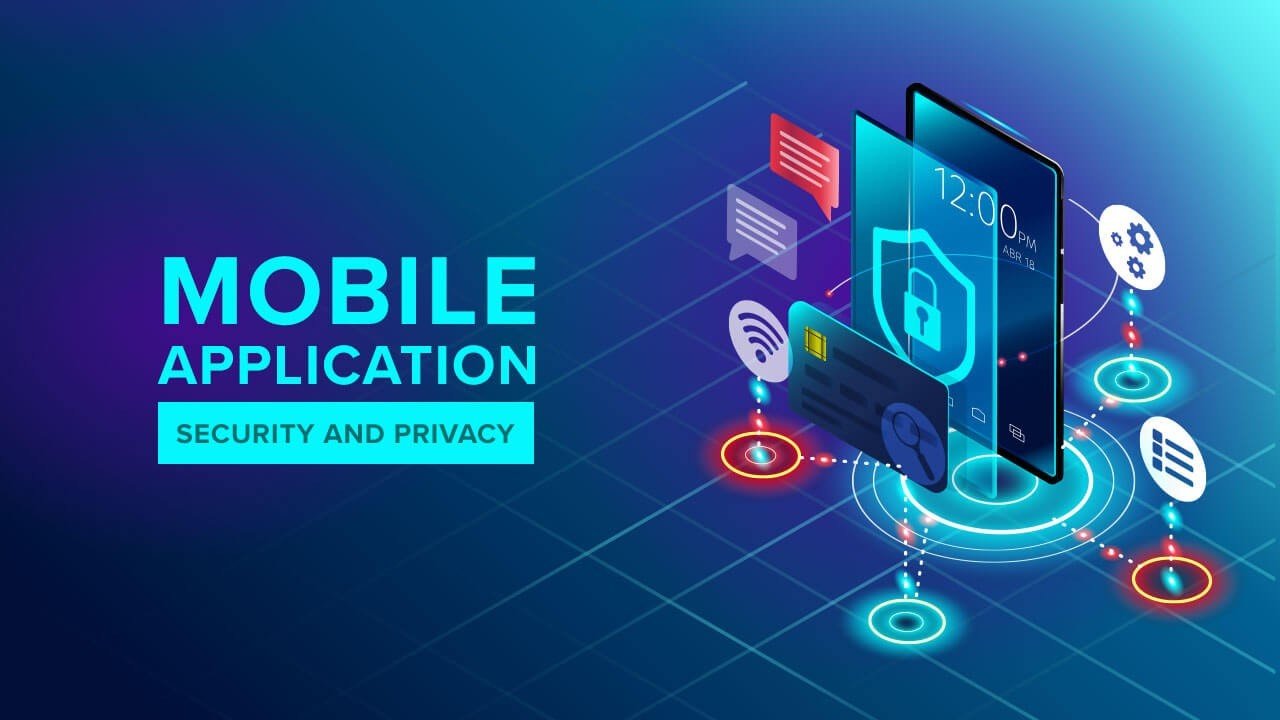Apps
What Are The Best Practices For Debugging Mobile Applications To Avoid Privacy Breaches?
Published
1 year agoon
By
Jack
People now rely heavily on mobile applications to get information and services quickly when they are on the go. As a result, comprehensive mobile app testing on a variety of devices has emerged as a critical phase in the creation of mobile apps. To test apps, websites, and other mobile services, developers use a mobile device lab that is equipped with a variety of mobile devices. It provides a means of experimenting with mobile device technologies outside of public wireless networks and in an isolated environment.
Such a lab’s main purpose is to replicate real-world situations, which enables testers to identify vulnerabilities in mobile applications and assess how well they would function in various device configurations, combinations of operating systems, and network environments. These labs support developers and QA testers in making sure the application is reliable, useful, and fits end users’ demands.
Despite its many benefits, the largest concern associated with mobile apps is security breaches. Apps are a prominent target for hackers because they include sensitive data, such as financial and personal details. The key concern for all developers continues to be app security.
A little security flaw or compromise could put the organization and the data on application servers in danger. Because of this, security is now deemed essential to the application’s success. Therefore, developers must make sure that the appropriate precautions are taken to preserve users’ data privacy and security throughout mobile app development, considering the rise in cyber attacks and breaches.
Debugging is necessary when an application behaves unexpectedly or crashes without any external forces involved. The process of identifying and fixing errors or bugs in applications is known as debugging. Developers must aim for and offer technological alternatives with full app security consideration when creating a mobile application. To prevent privacy violations and safeguard user data, developers can attempt a few best practices for debugging mobile applications.
In this article, we will discuss some of the best practices for debugging mobile apps to prevent privacy violations and protect them from possible security risks. Let’s quickly review the definitions of debugging and mobile app security before we get started.
Table of Contents
ToggleWhat does debugging mean?
The process of locating and resolving errors or defects in any application’s source code is known as debugging. It’s an extremely hard process that takes a lot of patience and concentration. Due to the fact that one component, or perhaps two, of complicated application architectures depend on one another. This implies that many other lines of code can indirectly get impacted by a bug in a single component, necessitating a review and necessary adjustment. Debugging often takes longer than coding.
Programmers can use a debugger as a tool to help with debugging. Debuggers allow one to observe the application code as it is running, so when an application does not function as intended, developers examine the code to find out why any mistakes happened. Programmers can stop an application’s execution while they examine each line of code, identify problems, and make corrections.
This in-depth view of the code during execution makes it possible to identify flaws in the code and understand workflows and application logic. Debugging techniques and technologies facilitate quicker problem-solving and increase developer output. The end-user experience and the quality of the application both increase as a result.
What is mobile application security?
In recent years, there has been a steady increase in the utilization of mobile devices and mobile applications. An essential component of any organization’s online presence is mobile apps, and numerous organizations only utilize them to communicate with users worldwide. Users run the danger of losing their data and personal information when they utilize unprotected mobile apps, which are susceptible to various harmful assaults. Endpoint security is essential for mobile applications because of this.
The focus of mobile application security is on the security measures used during the development process to guard against data theft and cyberattacks. This includes apps that are compatible with both tablets and mobile phones. By focusing on mobile app security, organizations may preserve their reputation, guard against login and personal data theft, increase user confidence and trust, and much more.
Guidelines for debugging mobile apps to prevent privacy violations
The security that a mobile app offers determines how successful it will be in the long run. Developers run the danger of violating user confidentiality when they fail to implement appropriate security measures for their mobile applications. The following are recommended practices for debugging mobile applications to prevent privacy violations and render them inaccessible to cybercriminals.
Make sure the codes are error-free
Potential vulnerabilities in mobile applications might result from improper coding practices. Thus, to ensure high code security, one of the best practices for debugging mobile applications is to routinely analyze the code and data to find and fix any flaws, vulnerabilities, or leaks. Before debugging a mobile app, developers should make sure it is fully error-free.
Using code analysis tools to test the application from various perspectives and make sure the code is safe is one of the greatest ways to protect it. It will assist developers in creating safe applications and protecting user data.
Ensure advanced authentication
Weak authentication is a contributing factor in some of the largest breaches of security. Thus, while creating mobile applications, high-level encryption that stops or reduces possible breaches is essential. Passwords and other forms of personal identification that serve as barriers to admission are referred to as authentication. Thus, when a developer makes an application, they should urge users to update their passwords regularly and to be extra cautious when authenticating.
Create applications that need strong alphanumeric passwords to be entered and that they be changed every three or six months. Biometric authentication methods such as fingerprints and retina scans can also be utilized in the case of apps that are too sensitive. It adds a layered authentication process and raises security.
Beware when using third-party libraries
Using third-party libraries makes it easier for developers to write code as opposed to starting from scratch while creating an application. But certain libraries can be quite unsafe for the application, even when they are really helpful. Because of this, employ extra caution and properly test the code before including third-party libraries in the application as they may expose it to security risks.
Examine the various versions of the library and give the code a thorough test before adding it to the application. Many of the biggest coding libraries still contain security flaws even after they have been thoroughly investigated or a new vulnerability has emerged.
To shield the applications from vulnerabilities in those libraries, use multiple internal controller repositories and policy constraints. The data layer will be separated with the help of these regulations.
Use only secure APIs
Unauthorized and poorly designed APIs can unknowingly provide hackers access to resources that they could misuse dangerously. The mobile application’s ability to protect user data is enhanced by the usage of secure APIs. The primary means of data communication between apps is through APIs. If developers use third-party APIs, they are responsible for ensuring the security of the code.
Employ secure tools and techniques
Using tools and techniques for secure mobile app debugging that safeguard data and code is another recommended practice. Using a debugger tool, one can examine and alter the application’s state while it is executing. Setting breakpoints, keeping an eye on variables, analyzing expressions, and going line by line through your code can all be helpful. Make use of tools that enable remote app debugging without putting it at risk of unauthorized access or alteration.
Test across a range of platforms and devices
Testing the app on many platforms and devices, such as Windows, iOS, and Android, is another recommended practice for debugging mobile applications. This will assist with locating and resolving any compatibility concerns, performance issues, or user interface glitches that may impair the functioning or user experience of the application.
Additionally, testing the app across a variety of platforms and devices will help guarantee that it respects each system’s settings for privacy and permissions and does not gather or retain more data than is required.
Encrypt each and every code
Small coding errors or oversights in testing can result in bugs. It leaves mobile apps vulnerable to being exploited by hackers. As a result, encryption is required for every single piece of data that is transferred over the app.
Hackers are unable to decode plain text when it is encoded into an ambiguous alphabet. This implies that even if data is stolen, it is transformed into a format that is meaningless and nearly impossible for anybody other than the owner of the decryption key to understand or access.
Frequently update the application and its dependencies
It’s a never-ending process to regularly update the app and dependencies to stay up to date with the newest security and privacy updates and enhancements. There is a need for fresh solutions when new risks arise. Update the SDKs, libraries, and frameworks for the apps to the most recent versions to take advantage of their bug fixes, improvements, and new features. This will allow developers to regularly test the apps for vulnerabilities.
Debugging mobile apps utilizing LambdaTest to prevent privacy violations
While there are other stages at which mobile application security testing can take place, the application development phases are often where best practices are established. In addition to protecting against implementation problems, it guarantees that security controls in an application function as intended.
Organizations can, however, also make use of various post-development technologies and services. To make sure that problems are found before going live, the app security testing procedure considers both code and configuration concerns in a setting similar to production.
Generally, different kinds of applications can be debugged with different specialized app security tools to find security flaws that the development team might not have known about.
LambdaTest is an effective solution for automating mobile application security testing on various platforms, including iOS, Android, and others. By utilizing its error tracking and reporting services developers can ensure the security of their mobile applications without compromising user experience.
LambdaTest is an AI-powered test orchestration and execution platform that enables large-scale manual and automated testing of web and mobile applications. With real-time debugging features, it offers a full toolkit for developing mobile applications. Offering developers the testing tools they need to improve user experience by tracking user behavior, easily tracking crashes and errors, and quickly identifying and fixing app problems.
As a result, the code quality will quickly improve, the app development process will run more smoothly, and the app’s overall functionality will be improved for increased effectiveness and success.
Using the platform, testers may test mobile and web apps in real-time or automatically across over 3000 settings, actual mobile devices, and browsers. Its transparency report feature, which offers insight into errors across several programming languages and frameworks, makes the platform more appealing and is a perfect tool for developing cross-platform mobile applications.
Conclusion
The goal of an application security plan is to avoid and address threats from cyber attackers, data breaches, and other sources. It can be achieved by adding best practices, features, or functions to the application. Therefore, it follows that creating a secure mobile application involves putting the above-recommended practices for mobile application debugging into practice. It helps to keep user data safe and secure while preventing vulnerabilities that could have a significant impact on the application’s functionality.
Author

